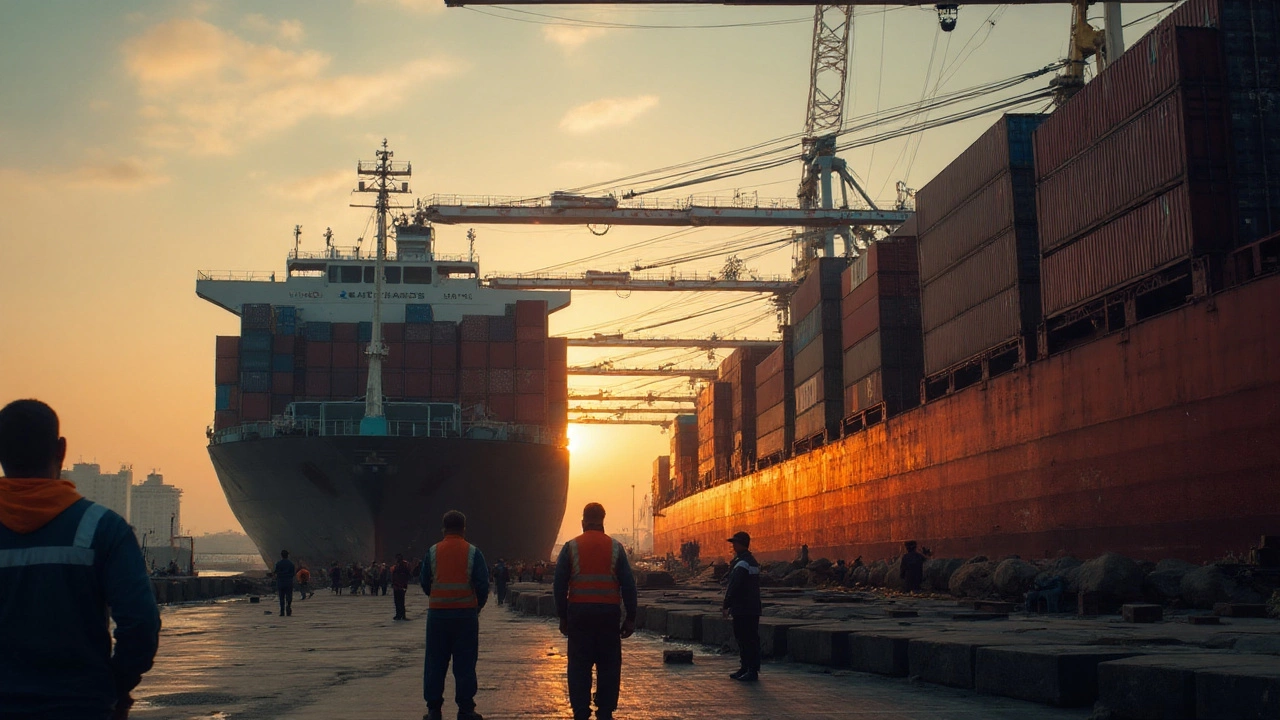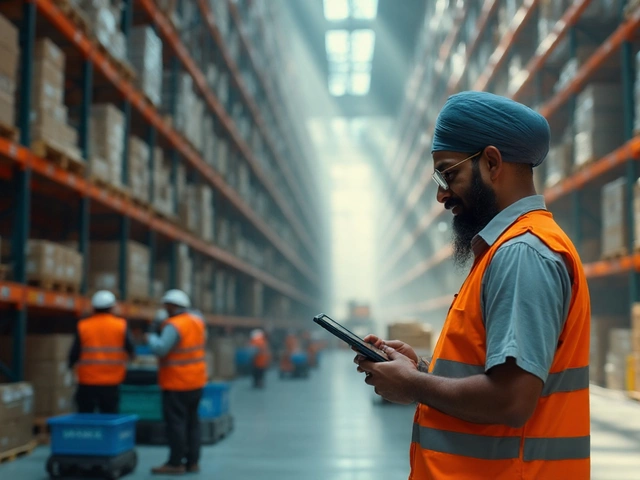Missed packages, blown deadlines, or damaged goods: international shipping nightmares keep even seasoned business owners up at night. The difference between success and chaos often comes down to one thing—reliability. It's not just about flashy ads or empty promises—actual, proven dependability is what matters to those shipping pricey electronics, urgent legal documents, or even that one-of-a-kind family heirloom. No one wants a parcel stuck in customs limbo. The real kicker? Even big names can slip up. Still, some shipping companies score way higher than others—let's sort facts from fluff.
What Makes an International Shipping Company Truly Reliable?
Spoiler alert: fancy branding doesn't guarantee delivery. When it comes to cross-border shipping, reliability is a whole cocktail mixed from factors you can't see at the post office counter. Ever tracked a package across six countries only to watch it stall in transit? It happens more than you think. Reliability starts with a massive, well-oiled logistics network—think distribution centers in major cities, partnerships with local delivery teams, and high-tech tracking. The best players invest huge amounts to get your parcel from A to B without drama.
Then there’s the paperwork gauntlet. Customs processes are a wild card. Reliable shippers sort it all with automated systems that flag forms, taxes, and the right codes—reducing delays. They also offer real-time tracking, so you’re never in the dark about your shipment’s location. And if things go south? Top companies offer customer support you can actually reach, not just a chatbot that loops endlessly.
Insurance is non-negotiable. When you’re shipping high-value goods, coverage options for lost, stolen, or damaged items separate the pros from the amateurs. Reputable shippers lay out policies clearly and handle claims smoothly, unlike those that fumble when it counts most. Speed also matters, but it's no use if a company rushes your goods and they show up broken—there’s a balance between speedy and careful. True reliability means delivering intact, every single time.
And reputation? It’s built on years of real wins—with published performance metrics, on-time delivery rates, and honest customer feedback, not clever ads. Don’t trust a shipper whose website is mostly glossy slogans and suspiciously perfect reviews. Hunt for hard stats and genuine stories from actual customers instead.
Top International Shipping Companies: Who Delivers Consistently?
FedEx. UPS. DHL. Maersk. Names you see everywhere, right? Each has strengths—some dazzle with speed, others ace complex paperwork, a few nail last-mile delivery like clockwork. What sets them apart?
- FedEx: Legendary for its speed and tracking detail. Businesses swear by FedEx’s early deliveries and overnight international options. They own an enormous fleet—over 650 planes (second only to some commercial airlines)—and deliver to 220+ countries. Their customer support gets rave reviews, and their claims process is efficient if you have the paperwork handy.
- UPS: UPS shines for reliability and massive reach, especially for e-commerce. Their tracking is rock-solid, and their brokerage service helps packages clear customs faster. UPS invests heavily in logistics tech, making them consistent over the years. Many online retailers choose UPS for the peace of mind.
- DHL Express: The go-to for tough destinations, especially across Europe, Africa, or Asia-Pacific. DHL absolutely owns some remote places—delivering to over 220 countries, more than anyone else. Their international express service is quick, safe, and supported by real people who help with tricky customs.
- Maersk: If you’re moving huge volumes or want to ship containers, this ocean giant dominates global trade lanes. While not a courier for single parcels, their supply chain reliability is unmatched for full-scale shipping, especially for established businesses needing consistency over speed.
- Japan Post and other national carriers: Don’t sleep on local players—sometimes they’re the smoothest for deliveries in their home regions. For example, Japan Post is king for shipping into (or out of) Japan. Combine national carriers with top express couriers for unbeatable results when routes get complicated.
Now, real-world results matter more than marketing. Parcel Perform’s 2024 Global E-Commerce Logistics Ranking, pulled from millions of packages, showed DHL Express had the fewest lost parcels globally, with a delivery success rate above 97%. UPS trailed by less than a percentage point. FedEx led in on-time delivery across North America, with 95% punctuality on international overnight shipments.
| Company | Countries Served | On-Time Delivery Rate (2024) | Lost/Damaged Rate |
|---|---|---|---|
| FedEx | 220+ | 95% | 0.8% |
| UPS | 220+ | 94% | 0.7% |
| DHL Express | 220+ | 96% | 0.6% |
| Maersk | 130+ | 98% (freight) | 0.4% |
Notice the margins are tight, but tiny differences—one lost parcel out of every hundred—become huge if you’re shipping a thousand orders a week.

Surprising Risks and Hidden Strengths: What Users Actually Experience
Ever heard horror stories from friends about customs delays or tracking that just stopped updating for days? It’s gut-wrenching, especially if you’re running a business. Years back, a friend shipped electronics to Brazil using a “budget” carrier. The box vanished in customs, and months later, nobody could tell him where it went. He’s not alone—lesser-known shippers sometimes cut corners, leaning on local agents, and aren’t transparent when issues pop up.
The biggest hidden risk is regional bottlenecks. For instance, shipping into India or Nigeria? Even big companies can stumble thanks to local restrictions, paperwork glitches, or just plain gridlock at major ports. Here’s where companies like DHL shine—they have their own customs brokers and “boots on the ground” to smooth out hiccups. That’s why they often cost more, but it’s a price for peace of mind.
Insurance is where people trip up most. Companies might advertise coverage, but claim payouts depend heavily on having all documentation, photos, and a tight timeline. UPS, for example, requires claims for lost international parcels to be filed within 60 days, and you better have proof of value. FedEx asks for similar rigor. Many complaints come when senders don’t read fine print, so always check terms before shipping anything valuable.
It’s not all doom and gloom. Reliable shippers also offer perks: free re-delivery attempts, secure packaging, and even door-to-door service for heavy loads. DHL workers in Europe have earned praise for personally calling recipients in case of delivery hiccups—no endless hold music, just action. UPS has a “Delivery Manager” app letting you redirect parcels mid-route, a lifesaver when plans change.
Another hidden gem? Many top-tier carriers offer online tools to automatically calculate duties and taxes, saving nasty surprises for recipients. Time equals money, so these features make lives easier for e-commerce sellers dealing with cross-border clients daily.
Tips to Ship Smart: How to Avoid Nightmares and Save Money
Getting consistently reliable international delivery isn’t just about buying the most expensive label—it’s all about smart choices, clear paperwork, and knowing what to expect. Don’t just pick a courier based on price or brand recognition. Here’s what works in the real world.
- Get quotes from at least two big international shippers. Hidden fees lurk, especially with drop-off or pickup in smaller towns. Compare final costs, not just base rates.
- Always use detailed descriptions on customs forms. Vague listings like “gift” or “electronics” are magnets for customs inspections, which means delays. Spell out what’s inside.
- Know your destination country’s quirks. Some have crazy rules against lithium batteries, books, or food. Couriers like DHL often list these online, but double-check with customer service if you’re unsure.
- Insure valuables—properly. Don’t just tick the cheapest option; check what documentation is needed for claims and keep digital copies handy. Take clear photos of your items and the sealed package. If trouble hits, you’ll be ready.
- Pick up the phone, seriously. Real customer service can work miracles when tracking shows “stuck.” Top companies have local contacts who may grease wheels. Don’t just rely on chat bots—ask for updates and push politely.
- Sign up for email or SMS updates. Real-time alerts let you fix problems quickly, like wrong addresses or missing paperwork.
Also, don’t be afraid to use mixing strategies. Many businesses stitch together FedEx for fast lanes, and Maersk for bulk freight. For rare routes, team up with local carriers who understand regional twists. That’s how seasoned shippers get consistent wins.
Last tip—timing matters. Avoid shipping large volumes near end-of-year holidays, Chinese New Year, or other nationwide shutdown periods. Even the best companies get swamped then. Ship off-peak to dodge chaos.

So Who Really Is the Most Reliable International Shipping Company?
Reliability isn’t just a trophy you hand out—it changes depending on what you’re shipping, where you’re sending it, and how fast you need it there. But if you want one name that crops up again and again among power users, e-commerce pros, and global chains, it’s DHL Express. They combine insane global reach, tight delivery times, strong customs support, and responsive service. Their on-time rate, plus the lowest lost/damaged percentages globally, edges them ahead of close rivals when you’re sending stuff the world over.
If your shipments live or die by tight deadlines—think medical samples or high-end electronics—FedEx is the runner-up, especially for time-critical routes. UPS is excellent for American businesses with global ambitions, rocking dependable performance and smart tech tools. If you’re shipping containers or raw materials, Maersk is hands-down the go-to for scalable, predictable service across seas.
Reliable international shipping success comes from picking the right match, prepping your paperwork obsessively, and being ready with a backup plan. Brands like DHL, FedEx, UPS, and Maersk keep showing up on “best-of” lists for good reason—they’ve earned it with real-world results, not just glossy branding. Don’t just ship—ship smart, and you’ll sleep easier, knowing your package is far more than just a tracking number in a queue.





